|
|
Like us on Facebook and
k
eep up with IHI news,
events, and stories!
Please consider making a tax-deductible donation to help Innovative Housing, Inc. support the hard-working families and individuals who live in our housing. 
You may make a secure donation online at our website! You can also mail your donation to: Innovative Housing, Inc. 219 N.W. Second Ave. Portland, OR 97209 Thank you! ------------------------------ If you prefer to receive this newsletter in print, please contact us at [email protected] ------------------------------ |
|
Thank You to Our Coats for Kids Donors!
|
  |
|
Thanks to your generosity, we were able to ensure that every child living in IHI housing had a winter coat this year. Thank you!
|
|
|
From IHI's Executive Director
Sarah J. Stevenson
People should not have to live on the streets. That's not a controversial statement but, unfortunately, that is not a value we live. Every time I drive by a tent or pass by someone laying on the sidewalk, I think to myself, "we must do better."
There are many smart, dedicated people committed to creating solutions to this seemingly intractable problem. The Joint Office of Homeless Services and its partners helped over 35,000 homeless people last year. In 2019, the City of Portland and its partners opened 878 new affordable apartments, which is more than ever before in a single year. Commissioner Nick Fish led the charge on Permanent Supportive Housing - his legacy of advocating for those with the lowest incomes and greatest barriers to housing will have long-term positive impacts for us all. Our other electeds share a commitment to housing and, over the last two years, voters passed both a City bond and an historic Metro Regional bond to fund the creation of more affordable housing.
How is it, then, that there are still so many people left out in the cold? How can all this effort, political will, and resource still not be enough? It is in large part because we are digging ourselves out of a huge hole. Decades of federal disinvestment in housing, rapid rent escalation, and a lack of tools in our toolkit created a shortage of affordable housing that, until recently, only poor people and affordable housing wonks recognized. Low-income households bore the brunt of it, invisibly becoming more and more rent-burdened. We couldn't see them when they went without food to pay the rent. No one watched as they took out payday loans and pawned family valuables to avoid being evicted. Out of sight, they doubled up, living in cramped and too-crowded homes, moving intermittently to vehicles and cheap motels when they exhausted other options.
Now that they are homeless, we see them clearly. It is hard not to notice as people are forced to live their private lives in our doorways, roadsides, and parks. But still, we avert our gaze. It is disturbing to watch a man my father's age dressing himself on a public street. It is heartbreaking to hear a woman sobbing on the sidewalk and crying out for help that won't come, because our mental health system is so broken we are mandated to leave her on the street rather than violate her civil liberties and give her the care she needs. And it is wrong when children walk from school to a car, where they will eat, attempt to finish homework, sleep, and wake to the reality that we can't do any better for them.
We turned a blind eye for too long and it is going to take time to build permanent solutions to our problem. In the meanwhile, we must do more for those who are suffering the most. None of us should be all right with someone's mother, father, brother, daughter, grandparent, or child spending the winter without shelter in a country as wealthy as ours. The safety net for people struggling with mental illness should not be the street. Initially, I was not a supporter of housing people at Wapato. But this crisis has gone on for too long and it is time to consider imperfect solutions. Everything should be on the table, including large scale prefabricated housing, zoning and building code variances, and repurposing public assets.
We also need to recognize that while many people with high service needs and no safety net may need affordable housing, poverty isn't the same as mental illness. Affordable housing can't meet everyone's needs and closing our eyes to the fact that many of our residents should be in much higher-care settings is willful ignorance. We know better and we can do better. Other regions encourage and invest in behavioral healthcare housing - we need to do the same. Hospitals and coordinated care organizations are our natural partners and should join us by investing in housing that will improve lives as well as measurable outcomes.
It is time to put our heads and our hearts together and craft an ambitious and achievable roadmap for our community. We must be brave enough to say it will cost more than any single bond measure and take longer than any elected term of office. We must be bold enough to consider things that are distasteful to our liberal sensibilities. We must be wise enough to listen to the people we are trying to help and let them lead the way toward solutions they will embrace. Finally, we must be honest enough to admit - unless and until we demonstrate otherwise - that we are the kind of people who leave our most vulnerable citizens alone and defenseless on cold, dark streets. It's time to prove who we are.
|
Thanks to an award of City bond funds this fall, IHI's next big project will be the preservation and repurposing of the historic Mann House in the Laurelhurst/Kerns Neighborhood. Surrounded by lush, mature landscaping, most people don't even know this urban oasis exists just off of Northeast 33
rd
Avenue and Sandy Boulevard. For the last 26 years it has been owned by an ashram known as The Movement Center. Over the last hundred years, the property has also been used as a senior living facility, an alcoholic treatment center, and a skilled nursing facility.
The Mann House is listed on the National Register of Historic Places and was developed in 1910 as an "Old Folks Home." Charles and Anna Mann wanted to create a place that would
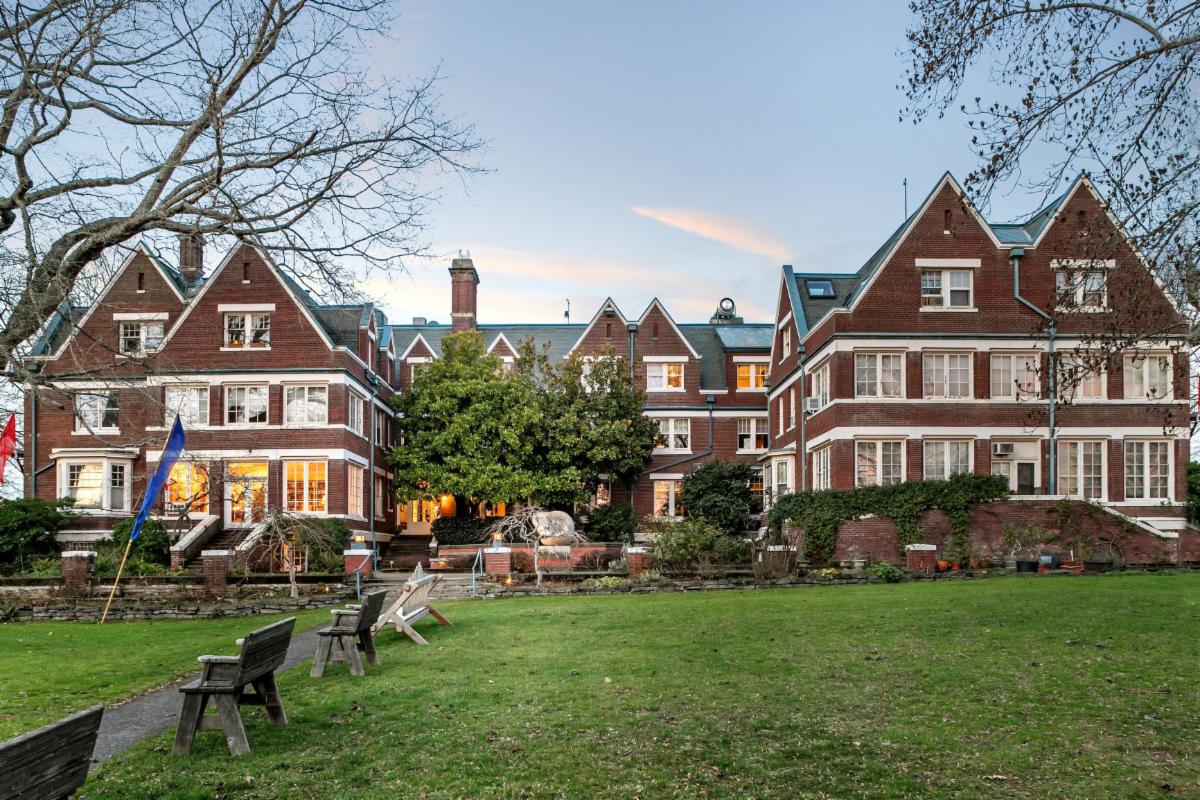 allow their elderly neighbors to stay nearby when they could no longer maintain their large Laurelhurst homes. Charles died just before construction began, so
Anna managed construction of the building and then proceeded to run the home for many years. IHI plans to rename the property
The
Anna Mann House
to honor and recognize Anna's early leadership as a female real estate dev
elo
per.
allow their elderly neighbors to stay nearby when they could no longer maintain their large Laurelhurst homes. Charles died just before construction began, so
Anna managed construction of the building and then proceeded to run the home for many years. IHI plans to rename the property
The
Anna Mann House
to honor and recognize Anna's early leadership as a female real estate dev
elo
per.
IHI is going to reconfigure rooms in the histo
ric building and the two "newer" wings to create 8 three-bedroom and 35 two-bedroom apartments, and construct a new addition that will provide 45 one-bedroom apartments. Twenty-nine of the homes will be affordable to households earning 30% of area median income or below and 12 of the units will be set aside as Permanent Supportive Housing (PSH) for families experiencing homelessness. IHI will provide housing stability services to our PSH residents, in partnership with Luke-Dorf, Inc., and the Immigrant and Refugee Community Organization (IRCO) will refer and support immigrant and refugee families at The Anna Mann House.
IHI is thrilled to be able to preserve this beautiful historic property and see it reborn as a welcoming affordable community in the heart of a great neighborhood, close to high performing schools, parks, transit, and many other services. We are even more excited to see its stately buildings, gracious parlors, and rolling lawns infused with new life by the many families who will live here!
|
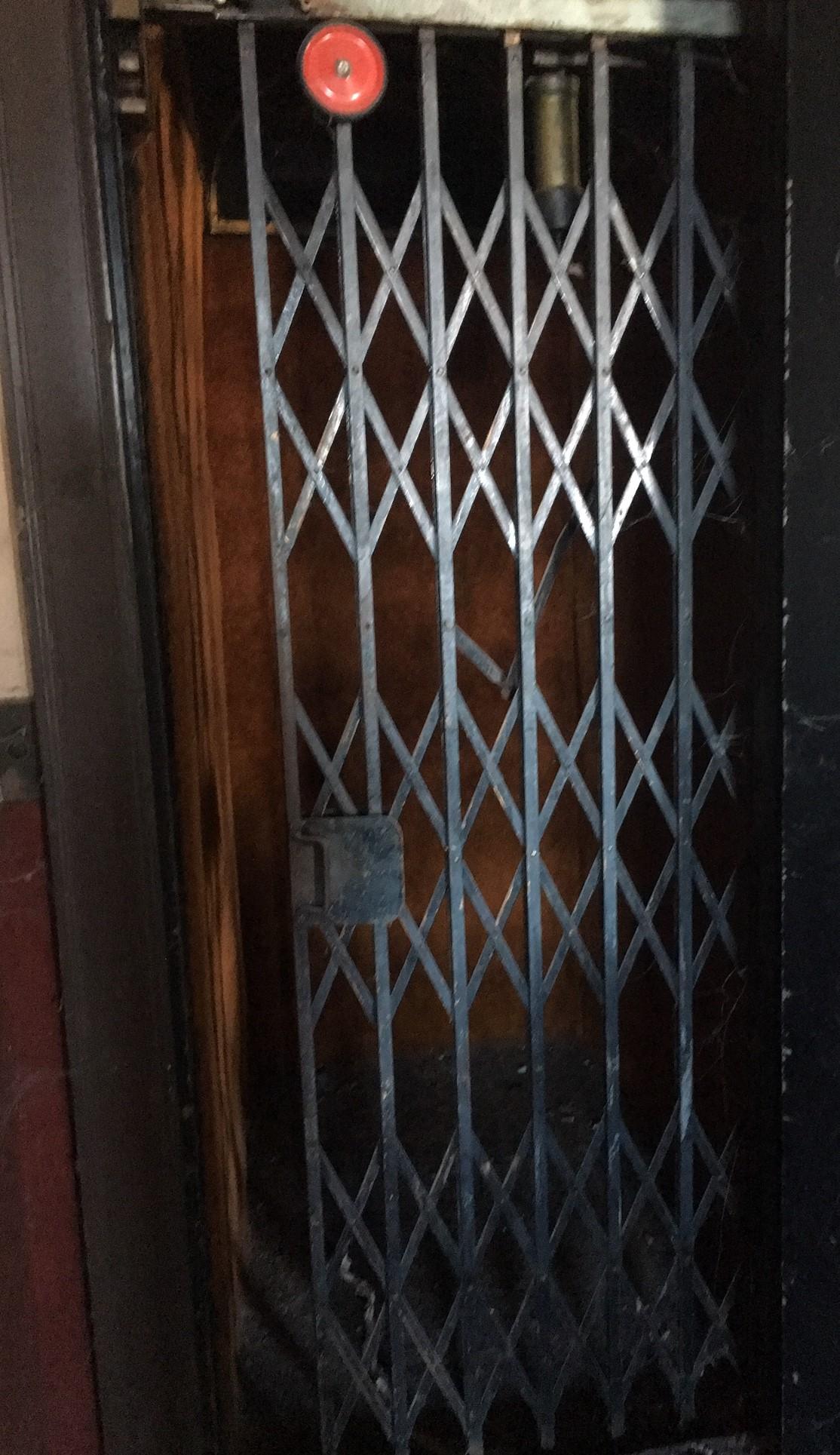
IHI secured capital funds to preserve and repurpose the historic Merwyn Hotel in Astoria in April, 2019. We began design work and fast-tracked the process so we could close on construction financing and start the physical restoration in November and the project is now underway! Digging into an historic building is always an exciting process, full of surprises. We found doorways we didn't know were there, parts of the old elevator we plan to keep and restore, and a badly located water main that is causing the contractor grief.
We have also enjoyed part
nering with local organizations that support our efforts to g
ive the Merwyn new life. The Astoria Downtown Hist
oric
District Association has been an ardent supporter, helpin
g us raise capital funds for our historic preservation ef
forts. The Clatsop Community College's historic preserv
ation and restoration program is using the project as a teaching opportunity for students while also helping us
preserve our historic windows. The Tongue Point Job Corps h
as even volunteered to paint some of the Merwyn's inter
ior hallways. We have really felt the love in Astoria! IHI is very h
appy to be part of this fantastic community and lo
oks forward to opening the doors to 40 new homes in Astoria in 2020.
|
|
A Vibrant! Success Story
Stone lived a transient life, going from city to city, shelter to shelter. He moved around a lot, often thinking that the grass was greener on the other side only to find out that was not the case. During this time in his life, and while experiencing homelessness herself, his former partner surrendered custody of their children. Stone did not know how to contact them and, at that time, was not able to care for them even if he could find them.
Many years later, Stone found himself in a shelter in Portland. This is where he first heard about Vibrant!, a new affordable apartment building being developed by Innovative Housing. With the assistance of his case worker, Stone was able to secure an apartment at Vibrant!. To him, Vibrant was a ray of hope. "When we shut that door we are safe, we are home," he says.
With this newfound stability and hope, Stone and Marie, his partner of 10 years, decided it was time to find his children, now adults themselves. They were able to reach out through social media and reconnect with his youngest son Chris. Together, they are working on rebuilding their relationship. The stability and safety of a permanent home have given Stone the foundation to be able to do this. He is even able to help his son with stable housing - Chris has moved in with Stone and Marie at Vibrant! and is exploring the possibility of attending college.
Stone's story illustrates how critical stable housing is for individuals and families. At IHI we love to hear about the ways our residents succeed and thrive when they are not struggling to secure and maintain housing. In 2020 IHI will be working to bring more than 200 new homes to the Portland region - in addition to providing safe places to live, we hope these homes will provide life-changing opportunities for 200 households like Stone's.
|
|
|
Construction Innovations
The construction boom in Portland has made it harder and more expensive to build housing. One reason is a shortage of skilled labor, which has contractors and development teams looking for ways to increase efficiency on job sites. This is leading to a greater use of technology throughout the building process, rather than just on the design end of things.
For example, using three-dimensional digital models based on engineering and design documents allows trade partners
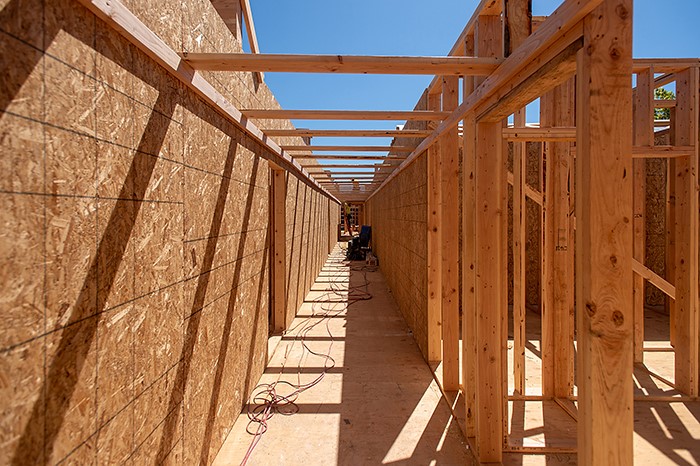
to prefabricate parts of a building, which mean
s a smaller crew can put them together faster on the construction
site.
Aaron Vogel, a project and building information m
odeling (BIM) manager for
Bremik Construction
, has he
lped guide a number of projects where Bremik has collaborated with trade partners to create these models before the first
shovelful of dirt is moved. "If we're coordinating with trade partners on all the systems in the building months before anything shows up on-site, it allows them to prefabricate," Vogel said. This is what Bremik did with the framing subcontractor at Magnolia 2,
Timberland Inc
. The two companies worked
up a digital framing package based on building plans using
Autodesk
Revit design software. This allowed Timberland to pre-cut every stick of lumber being used for the four-story building.
The result was a much faster framing process at Mag 2, contributing to the project being completed weeks earlier than expected. Completion was scheduled for January 2020 but IHI received the temporary Certificate of Occupancy on December 26
th
and new residents started moving in that day!
|
|
Together We Make a Neighborhood
The
Fair Housing Council of Oregon is now accepting entries for its
22
nd
Annual Fair Housing Poster Contest! This year's theme is: "Together We Make a Neighborhood."
The contest is open to children in 1
st
through 8
th
grades.
Ten contest winners will receive cash awards and t
he Grand Prize winning artwork will be printed on thousands of posters and distributed throughout Oregon. The poster contest is a wonderful opportunity to educate young people about their civil rights in housing, Fair Housing laws, and the value of

diverse neighborhoods. Most teachers are happy
to have a parent come to class and facilitate a fair housing lesson and the kids love to make posters-if you have been
looking for ways to engage with young people and teach
them about the importance of equal access to housing, FHCO's poster contest is a great way to do it!
The poster contest deadline is March 13, 2020.
For more information, visit the FHCO website at
|
Holiday Cheer and Celebrations!
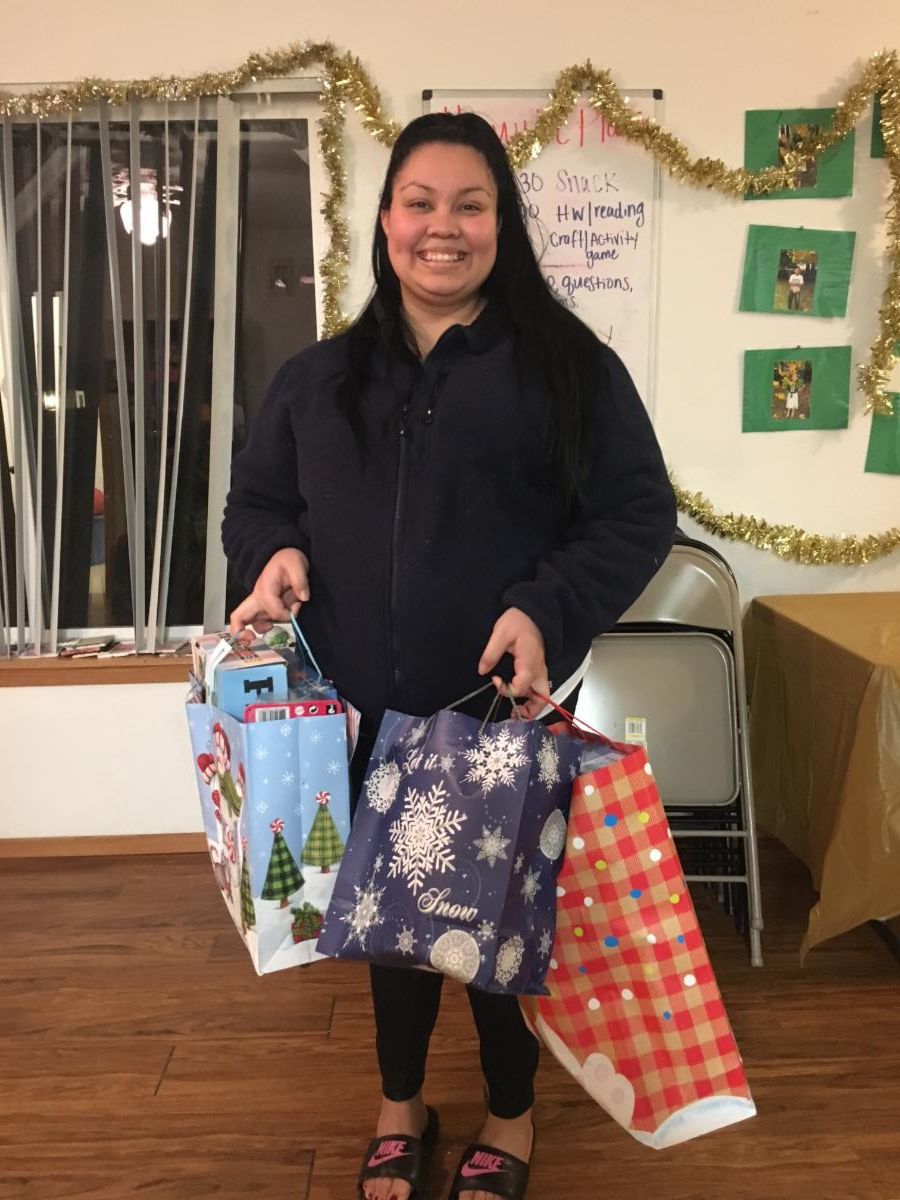

A generous donation from Michele Morgan-Devore allowed IHI to help dozens of resident families provide holiday gifts for their children.
IHI was happy to help celebrate the season with so many of our residents this year. We enjoyed sharing
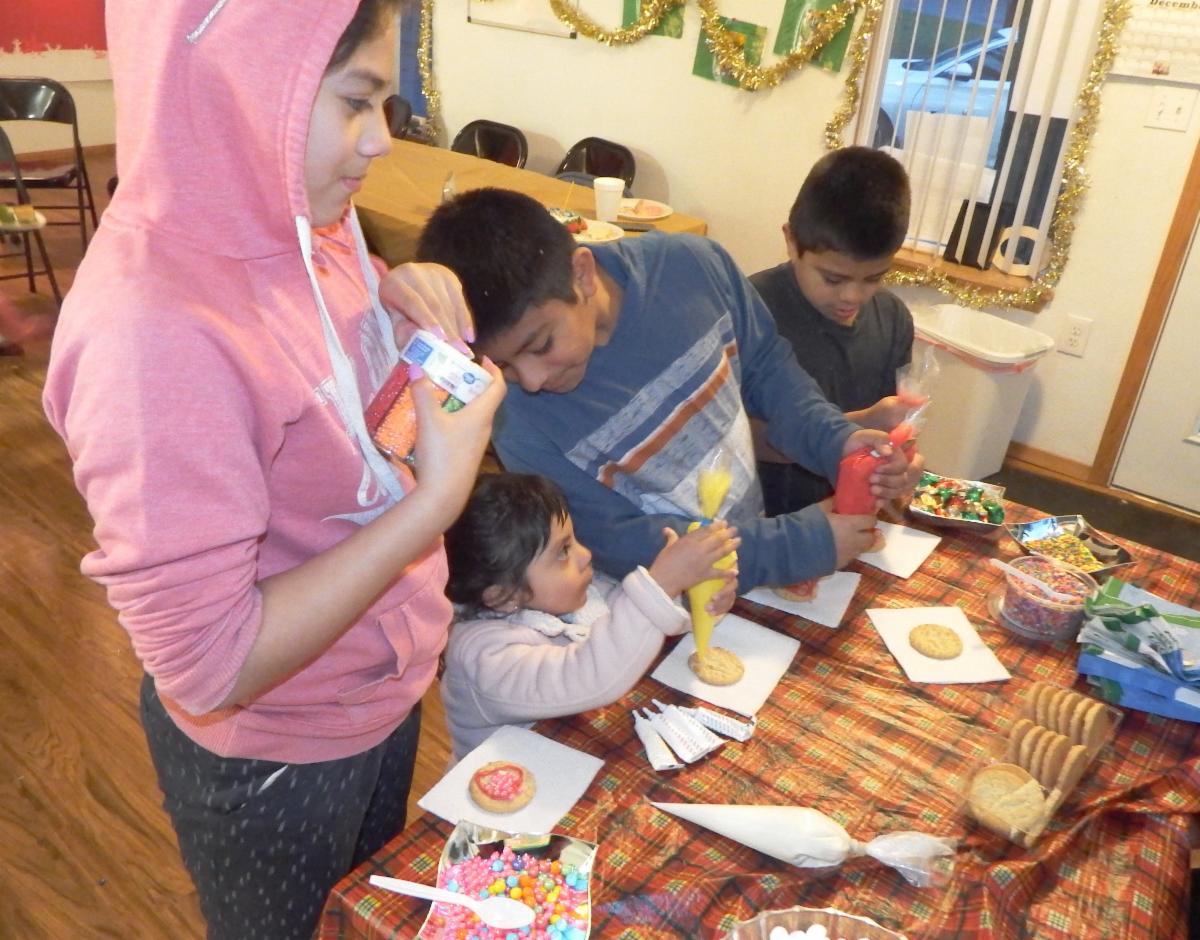 food, cookie decorating, family photos, and pinatas!
food, cookie decorating, family photos, and pinatas!
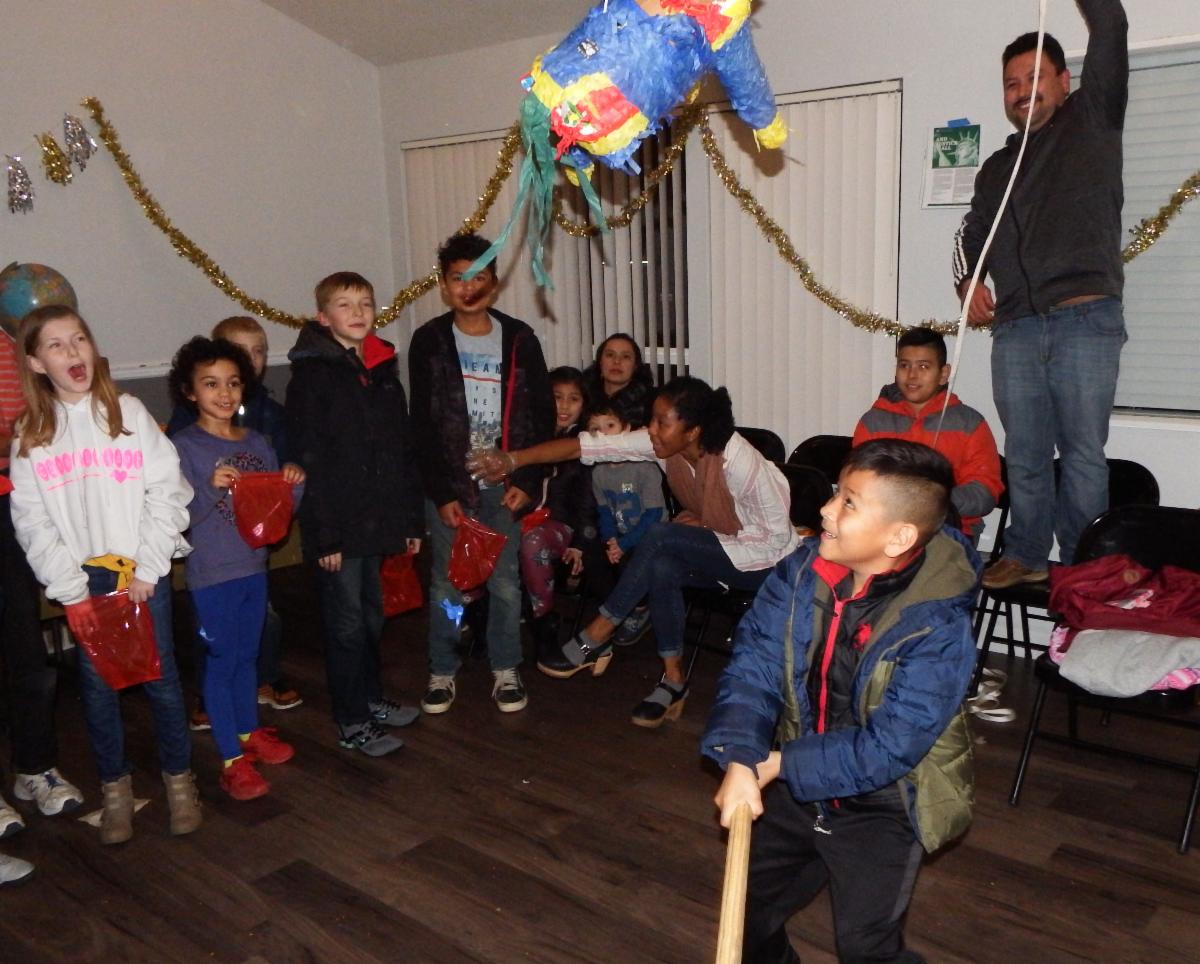
|
|
| |
|